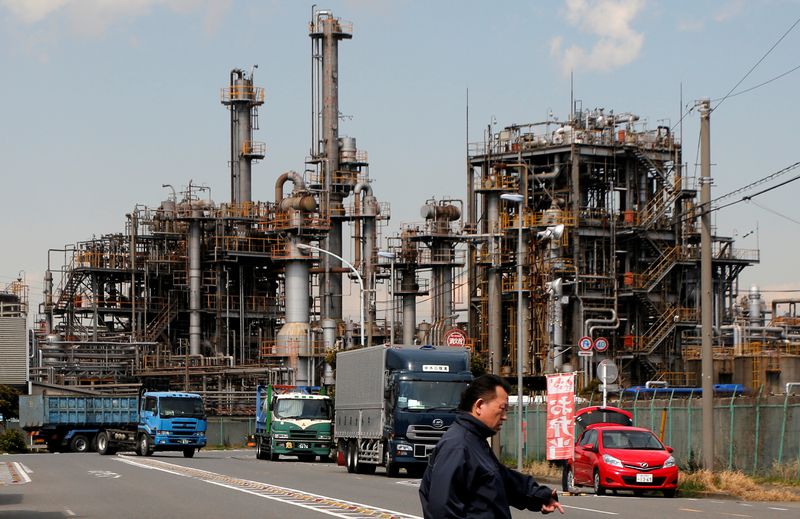TOKYO (Reuters) - Japan's factory activity shrank at the softest pace in five months in March due to an expansion of inventories, but still-weak global and domestic demand conditions meant the post-COVID economic recovery will take a while to solidify.
The final au Jibun Bank Japan Manufacturing Purchasing Managers' Index released on Monday rose to 49.2 in March from February's 47.7, marking the slowest contraction since November 2022. It was also higher than the flash reading of 48.6.
"The health of the Japanese manufacturing sector showed signs of improvement at the end of the first quarter of 2023," said economist Usamah Bhatti at S&P Global (NYSE:SPGI) Market Intelligence, which compiles the survey.
"Both output and new orders fell at the softest rates for five months, though the latter still saw a solid reduction, with panel members signalling subdued market demand in both domestic and international markets," Bhatti said.
Manufacturing output and new orders contracted for a ninth consecutive month, the survey showed, as customer and market demand remained weak. This was in contrast to the official manufacturing data released on Friday, which saw Japan's factory output rise 4.5% in February.
Japan's economy has finally started to recover from the COVID-driven downturn, though a global slowdown and rising food prices hang over a full-blown rebound in the growth and the outlook for exports and consumption. Relatively high inflation also remains a potential drag on households.
The survey showed the sub-index gauging stocks of finished goods was at the highest since February 2009, while backlogs of work declined for six consecutive months, leading some firms with lower order volumes to focus on building post-production inventories.
Stocks of purchases expanded consecutively since October 2021 due to price hikes.

Factors including a surge in raw material prices and a weaker yen contributed to elevated input price inflation even as the rate of growth was the slowest since August 2021, while the pace of output price inflation expanded to a three-month high.
Supplier delivery delays continued the trend since January 2020 to stay below the 50.0 threshold, the survey showed.